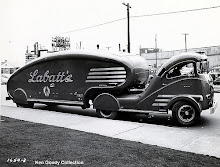Anyone who has ever ridden a bus in most US cities knows how pathetic public transportation is in our country. The number of busses is limited, you have to sit and wait for 30 minutes in between busses and ridership is low. There are a few exceptions, mostly in very large cities but in smaller to medium sized cities public transportation is mostly a waste of time and resources.
I’ll use my own city of El Paso as an example. It has a population of around 700,000 people. Most buses run on their routes every 30 minutes, when the busses are not broken down (very common in this city). They ply one of 14 predetermined routes and you have to walk to the nearest bus stop to catch one. The fare is one dollar.
The busses all have handicapped access, large flat lifts designed to pick up those tied to wheelchairs or unable to climb the steps. For the rest of the populace, the bus kneels down when it stops so that first step is nice and easy. These two features lead to frequent failures and almost everyday you can see one of the city busses broken down on the side of the road like some ratted out old French car with the city maintenance vehicle alongside.
My wife attempted to use the public transport for a while but found that the bus frequently never arrived or she had to get off and wait for another one after the handicapped access lift got jammed and the doors could not close. After a few months she decided that the 37 year old Fiat 128 I bought out of Hemmings Motor News for $500 was more reliable transportation (actually it was. Other than one broken clutch cable, the little car got her where she needed to be every time.)
So, is public transport just an idea that doesn’t work? No, in fact all I have to do is cross the border into Juárez Mexico to find a cheap and highly efficient public transport system. Well almost. It’s not public at all. Instead, there are thousands of old US school buses on every street. They are privately owned by “ruteros”, the name given by the denizens of Juárez to the owner-drivers of these vehicles.
I’ll use my own city of El Paso as an example. It has a population of around 700,000 people. Most buses run on their routes every 30 minutes, when the busses are not broken down (very common in this city). They ply one of 14 predetermined routes and you have to walk to the nearest bus stop to catch one. The fare is one dollar.
The busses all have handicapped access, large flat lifts designed to pick up those tied to wheelchairs or unable to climb the steps. For the rest of the populace, the bus kneels down when it stops so that first step is nice and easy. These two features lead to frequent failures and almost everyday you can see one of the city busses broken down on the side of the road like some ratted out old French car with the city maintenance vehicle alongside.
My wife attempted to use the public transport for a while but found that the bus frequently never arrived or she had to get off and wait for another one after the handicapped access lift got jammed and the doors could not close. After a few months she decided that the 37 year old Fiat 128 I bought out of Hemmings Motor News for $500 was more reliable transportation (actually it was. Other than one broken clutch cable, the little car got her where she needed to be every time.)
So, is public transport just an idea that doesn’t work? No, in fact all I have to do is cross the border into Juárez Mexico to find a cheap and highly efficient public transport system. Well almost. It’s not public at all. Instead, there are thousands of old US school buses on every street. They are privately owned by “ruteros”, the name given by the denizens of Juárez to the owner-drivers of these vehicles.


Other than looking sporty, the tall pipes keep the exhaust fumes above the pedestrians
They are so prevalent that you can literally walk out on any moderately sized street, stand there for about a minute and one will stop for you if you hold up your hand. No schedules, no designated stops and it costs 3 pesos (less than a quarter) to ride.
 Five deep in a downtown park
Five deep in a downtown parkNow, they are old school buses so there’s no kneeling at the curb, and someone with a wheelchair will need someone else on the bus (like the driver) to help them board. They do have some things that the American counterparts don’t though. Things like vendors selling snacks on board, lively music and lots and lots of amusing decorations. Lots of Virgin Guadalupes, futbol logos, sexy girls and dedications to passed relatives adorn the rear windows. It’s a large outlet for reproduction 59 Cadillac taillights and velvet fringe. Illicit Bugs Bunnys are fairly popular too.
I wonder if we Americans would just let our hair down for a few moments if we couldn’t come up with brilliantly simple solutions like this.

Chrome naked ladies - popular with drivers of heavy vehicles worldwide (with the possible exception of Tehran)

And you thought everyone in Mexico was named Jose or Pedro

2 comments:
How do you know the bus will take you where you want to go?
There are literally thousands of these busses. They go everywhere. I assume there's a plan as they have numbered routes on the side. Also each bus has it's area written on the front like Greyhound busses do. A hot chick can get the driver to go anywhere she want!
PS: No, I'm not kidding about the last statement.
Post a Comment